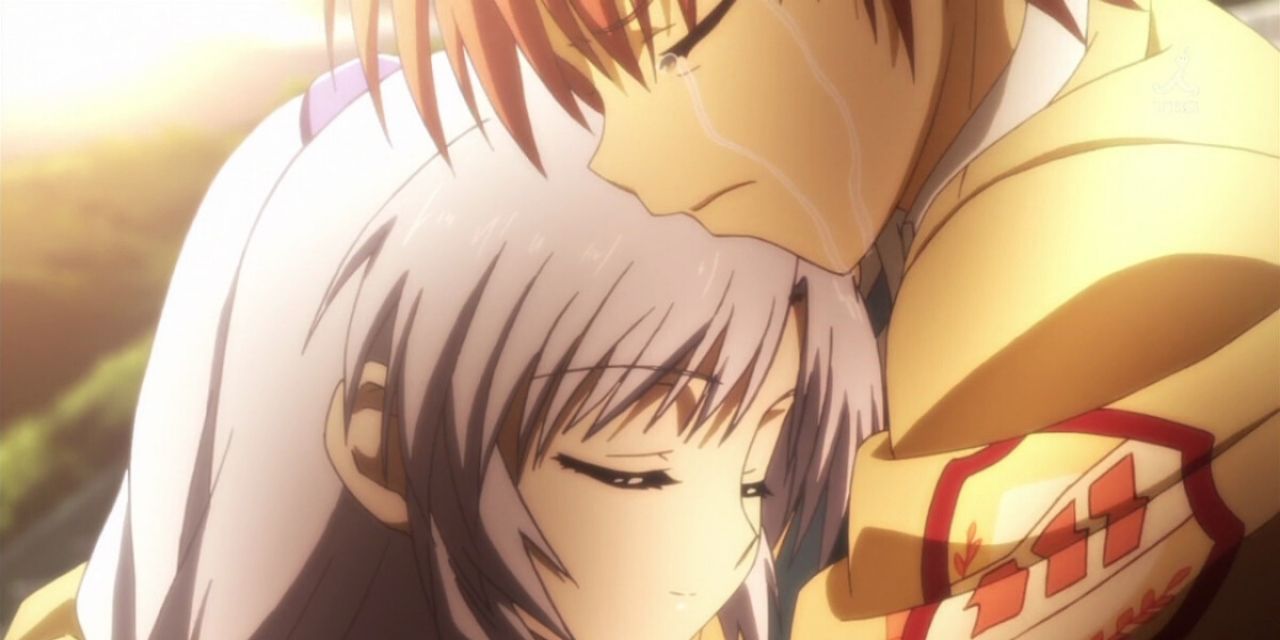
When it comes to anime, many fans enjoy shows that give them a good cry session. Some of these series include Anohana: The Flower We Saw That Day and Your Lie in April. Surprisingly, many viewers prefer to watch a sad and depressing anime series than one that guarantees them a happy ending. This begs the obvious question: what exactly makes sad and depressing anime titles so appealing to anime viewers? Here are some potential reasons.
We live in a society where young boys and men are taught to suppress emotions and withhold tears. However, sad and depressing anime shows allow viewers to feel and express intense feelings and tears. One prime example is Angel Beats!. In the last episode, “Graduation,” Yuzuru Otonashi confesses his feelings for Kanade Tachibana and proposes that they stay at the high school to help others pass through into the afterlife. However, Kanade reveals to him that her biggest regret is not thanking the person from whom she received a heart transplant, which happens to be Otonashi. After finally thanking him, Kanade's spirit is able to move on.
The sad moment in this scene is the sacrifice: Otonashi was the heart transplant donor for Kanade, giving her a second chance at life. In addition, Kanade’s gratefulness for his sacrifice and her strong desire to thank him even in the afterlife further creates a sad but touching atmosphere. Whenever there’s a series involving a terminally ill character, we can assume there’s a heartfelt backstory, setting up an invitation for viewers to cry.

Furthermore, viewers develop a strong attachment to the characters in sad anime titles. Whenever a character goes through some sort of trauma, we can’t help but feel a degree of empathy toward them. Throughout both seasons of Clannad, viewers grow attached to the main protagonist, Tomoya Okazaki, a high school delinquent who lives with an alcoholic father. Although Tomoya has many personal problems at home and doesn’t envision a future for himself, this doesn’t stop him from helping his classmates achieve their dreams. He eventually falls in love with Nagisa Furukawa, and they have a daughter, Ushio.
Unfortunately, both Nagisa and Ushio pass away, leaving Tomoya in despair and wishing for a miracle to reverse the situation. Tomoya's kindness and good-natured soul make him a likable character in the eyes of the audience. Tomoya suffered a lot throughout his life, and so audiences can’t help but want him to have a good life with Nagisa and their daughter -- he truly deserves it.

Aside from building a strong attachment to these anime characters, viewers can also see themselves as them. In addition, the depressing situations these characters are in can cause viewers to think about their own relationships with others and the possibility of a loved one suffering such an experience. In the anime film A Silent Voice, Shoko Nishimiya, a deaf girl, suffers intense bullying from Shoya Ishida and his classmates. Viewers feel bad for Shoko, but may also find her relatable if they or someone they know suffered from school bullying. Thus, watching sad anime means that finding a connection with specific characters can be used as a healing mechanism for audience members' own emotional or mental trauma.
Overall, sad and depressing anime is the way to go for those who may need a good cry session and just be in their feelings for a while. With their relatable characters and dramatic “in-your-feels” storylines, these are just some of the reasons why sad and depressing anime titles continue to be a must-watch for fans.
0 Comments